The ‘Malayali’ Food
- Sujit Babul
- May 2, 2017
- 5 min read
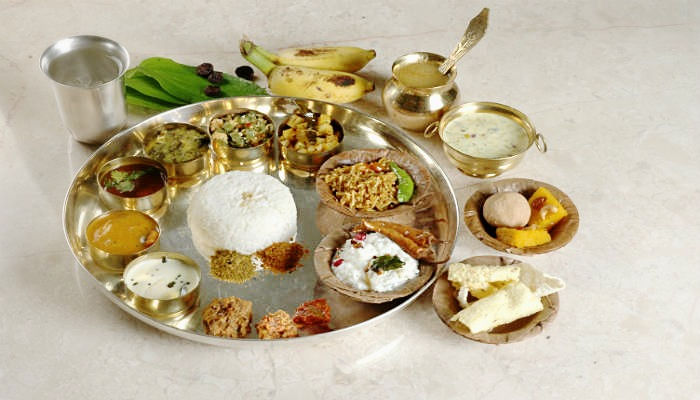
Anything or anybody from Kerala is a Malayali and I am one of them. I was brought up on a wide variety of dishes that my mom used to feed me and this was my first experience of being a foodie.
The food offers a wide variety of sensations to the palate. I endeavour to highlight a few aspects of them.As the tradition goes, our dishes are incomplete without any sort of meat. Beef is unwittingly the most loved non-veg found across the state that we did protests against the ruling of the Bombay High Court to ban this in the state of Maharashtra as we were appalled.
This delicacy can be prepared in many ways but the most famous one would be ‘beef fry’ which is flavoured with curry leaves, coconut, and pepper and served with ‘parotta’ which is a flat bread made with refined flour and sesame oil. Other preparations would be ‘kappa biriyani’ which is mashed tapioca mixed along with beef and beef chilly.
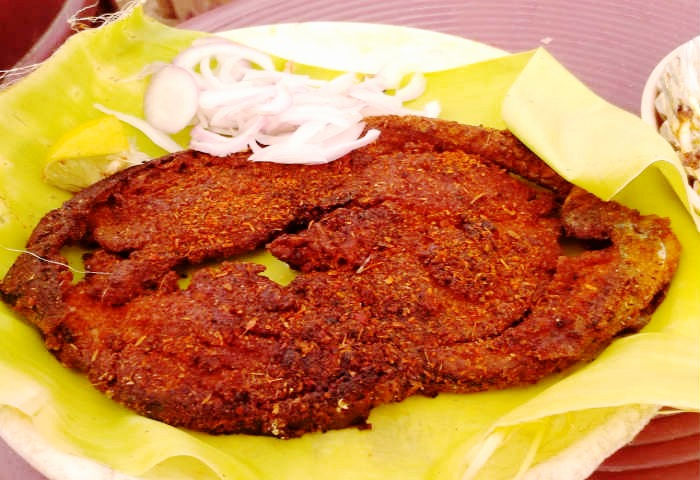
Must Read
Even, fish highly popular here especially in coastal regions of Cochin and Alappuzha. The preparations include spicy fish fries, fish curries and fish simmered in coconut milk. This conversation is incomplete without referring to ‘karimeen’ which is a freshwater fish that is either fried or marinated with a few spices, wrapped in a banana leaf and grilled. Chicken is also eaten here but we malayalis love our red meat and fish more. Kerala literally means the land of ‘kera’ or coconut as there is an abundance of it.
If this is the scenario then it is no wonder that it forms an essential part of the culinary heritage. We use it in the form of oil, milk, and pieces. The most famous consumption of coconut comes in the form toddy or ‘kallu’ which is a kind of fermented liquor collected from the sap of the tree and this is the job of the traditional tappers and served in ‘shaaps’ which is the colloquial pronunciation of shops. These places are also famous for its spicy fish curry and boiled tapioca, beef fry, and duck roast which serve as accompaniments to toddy.
Coconut oil is very important as it is the base and provides a peculiar nutty flavor to the food which is also why the banana chips are popular. The meat is not the only specialty as Kerala offers its very own share of mouthwatering vegetarian dishes.
The place where most of the dishes segregate is ‘the Sadhya’ or the traditional feast prepared during auspicious occasions and festivities. It is served on a banana leaf. It consists of various items like plain banana chips and those coated with jaggery, pickles, ‘olan’, ‘avial’, ‘toran’, ‘mizhakkuvaratti’ and ‘kalan’.
Olan consists of black-eyed peas and white pumpkin cooked in coconut milk. Avial is an assortment of vegetables cooked with grated coconut and it can either be with gravy or simply moist. Toran is any vegetable cooked in its last stage along with some grated coconut and the most eaten is that of cabbage.
Mizhakkuvarrati is any vegetable cooked in coconut oil as ‘mizhakku’ translates into grease and the most famous one is that made with a combination of raw banana and yam. Kalan is a curry made with yam, yogurt, and coconut which is mostly eaten with a pinch of sugar to balance the sourness. These are served with a fat grain, unpolished brown rice which is local to the state and is moisten with ‘sambhar’, parripu or dal, ‘rasam’ which is a gravy which flavored with tomato and pepper; and ‘morru’ or ‘sambharam’ which is butter milk spiced with curry leaves, chilies and ginger. It also consists of ‘payasam’ which is a sweet dish mostly made with rice and milk but other variants too are present. Interestingly, sadhya varies from the northern to the southern tip.
What follows this hearty meal is a sound sleep. We malayalis are particularly concerned with our breakfast. ‘Puttu’ is a steamed cake made with rice flour in an elongated mold or in a spherical one which can also be replaced by a coconut shell; this is traditionally served with chickpea curry or moong curry but my aunt serves it with cooked ‘chana dal’ spiced with mustard, red chilies and curry leaves which she inherited from her mother.
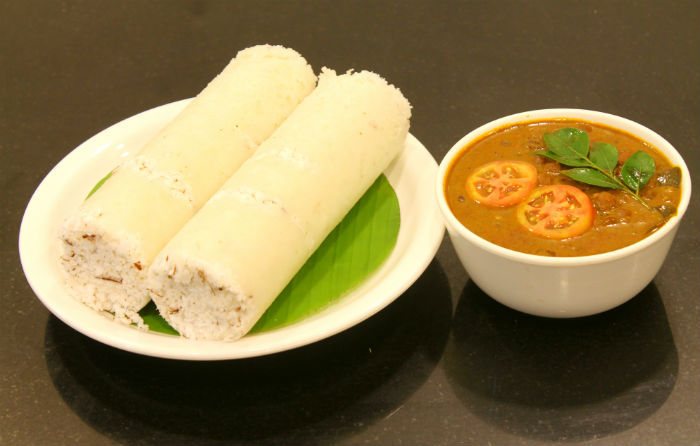
‘Appam’ which is made with a rice batter that has been fermented overnight either by adding toddy or yeast and cooked in a special pan; it is served with veg stew which is vegetables cooked in coconut milk or a classic egg curry. Along with these dishes, we also find the usual idlis and dosas. In the Malabar region, fish fry and other hardcore meat preparations form a part of this first meal of the day.
I have always noted that tea shops are places that one must visit for fresh tea, food, and gossips as this is where most of the people of the town gather which qualifies it to be the best place to socialize. The tea here is different than the northern states which has more milk in it and spiced with elaichi or ginger whereas we serve it generally strong with a proportionate amount of milk. I must confess that I like both the variants. These places also specialize in various snacks like banana fritters, medu vadas, bonda which is a southern counterpart of the ‘batata vadas’ of Bombay. This is also a must visit for the traditional breakfast.
Malabar is famous as the Islamic population here has provided a unique influence by replicating certain Arabic dishes like Khapsa. The biriyani is different as it uses short grain rice instead of basmati and the best place to eat it is at Paragon restaurant in Kozhikode.
Kerala cuisine is incomplete without mentioning the Indian Coffee House. Historically, it was started as a worker’s cooperative by the communist leader A.K Gopalan and continued the thread into the present which is now a chain of restaurants. What is peculiar about it is that it specializes in the local flavors so is being managed by two boards; one that takes care of the northern part and the other the southern part.
However, what remains constant in all of them is their masala dosa where the stuffing has beetroot in it which provides a pinkish hue to it.
To conclude, I’m not a food historian but just a foodie. This article is bundled with my observations and interactions through my traveling. I would suggest my audience to at least once visit Kerala and explore it themselves.







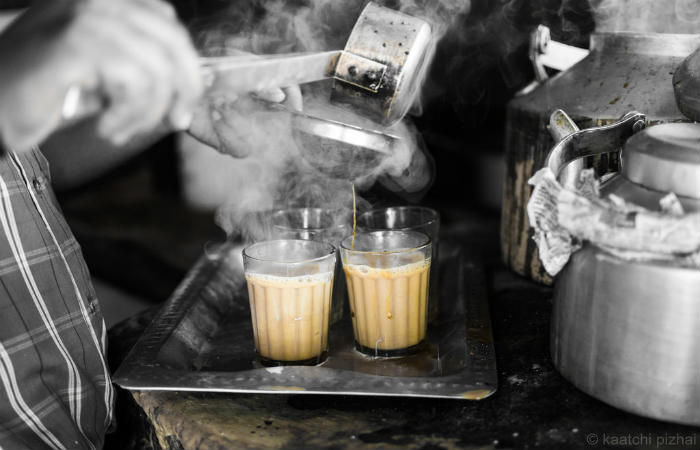

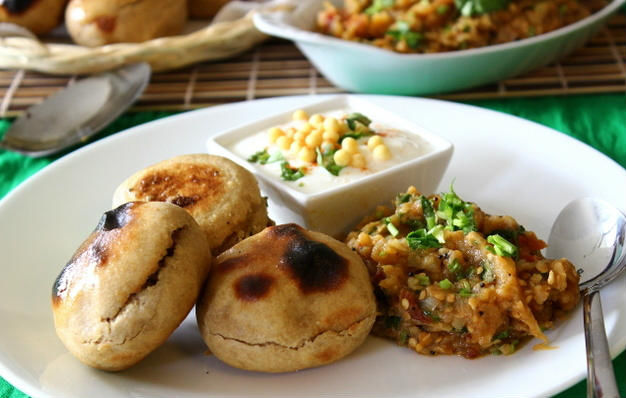






Comments